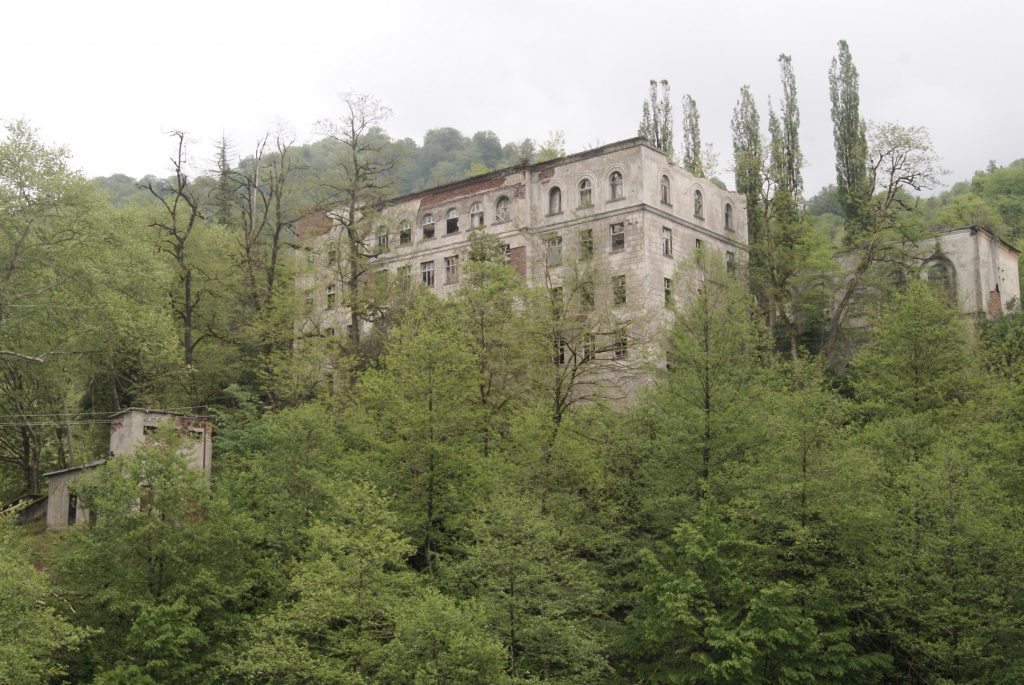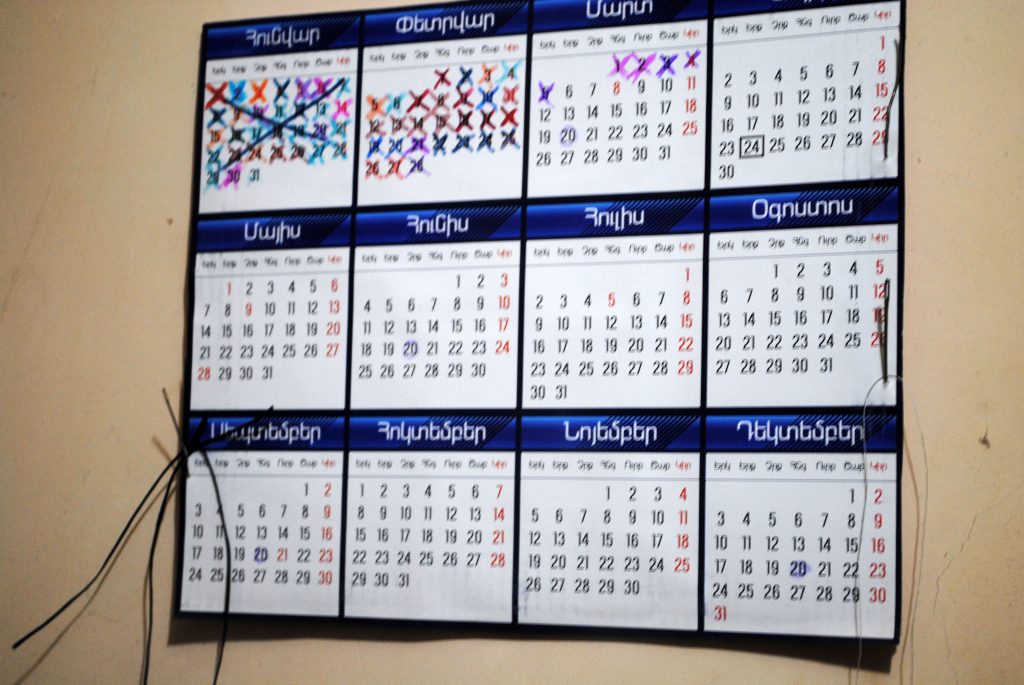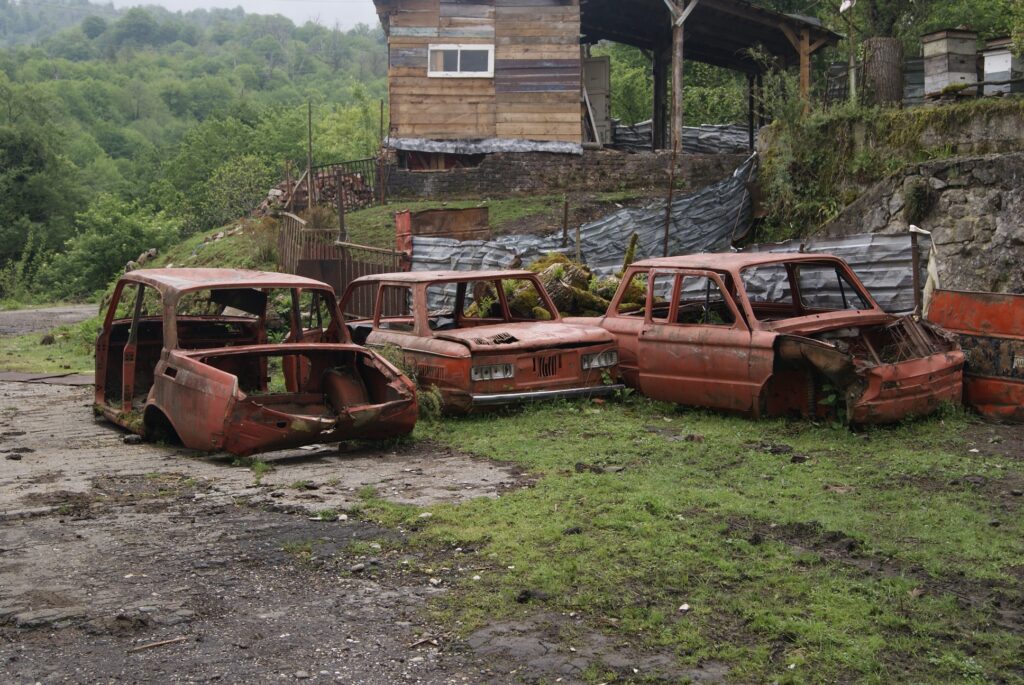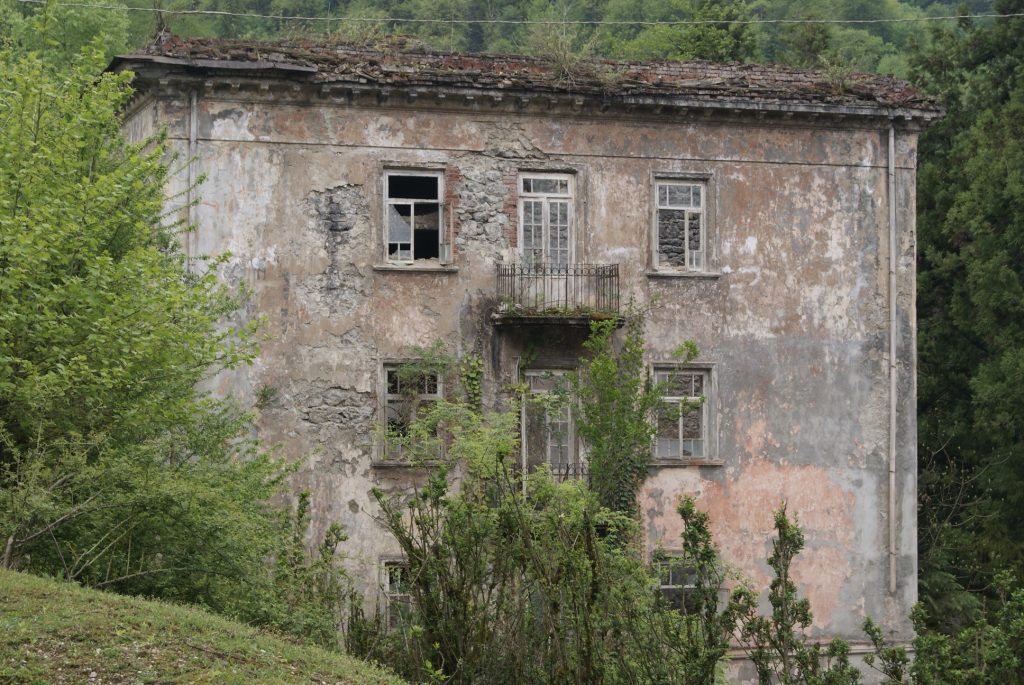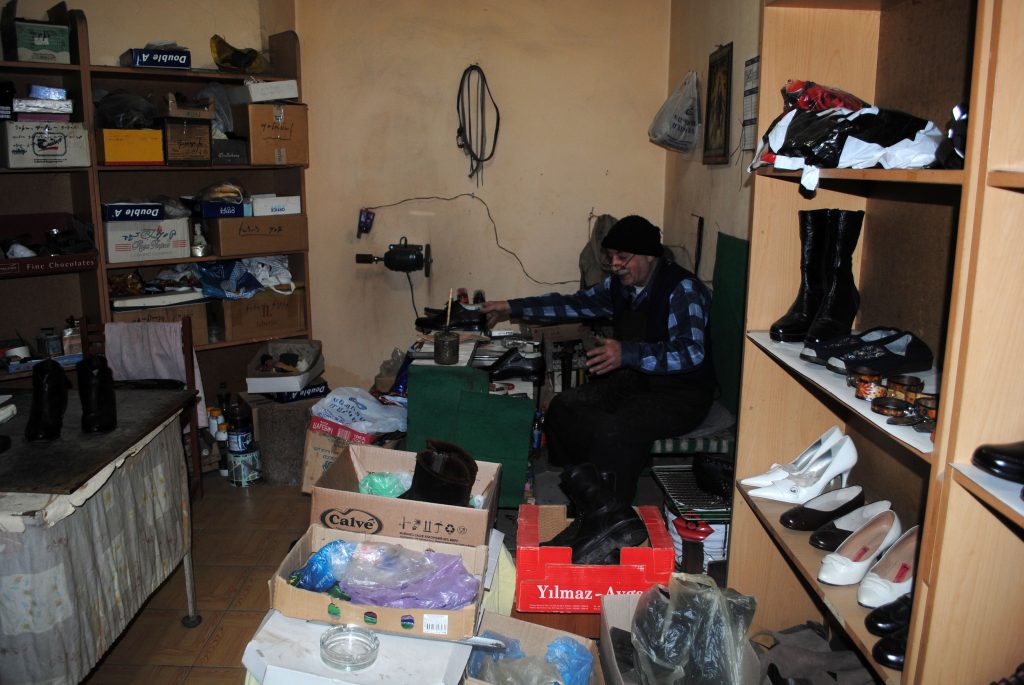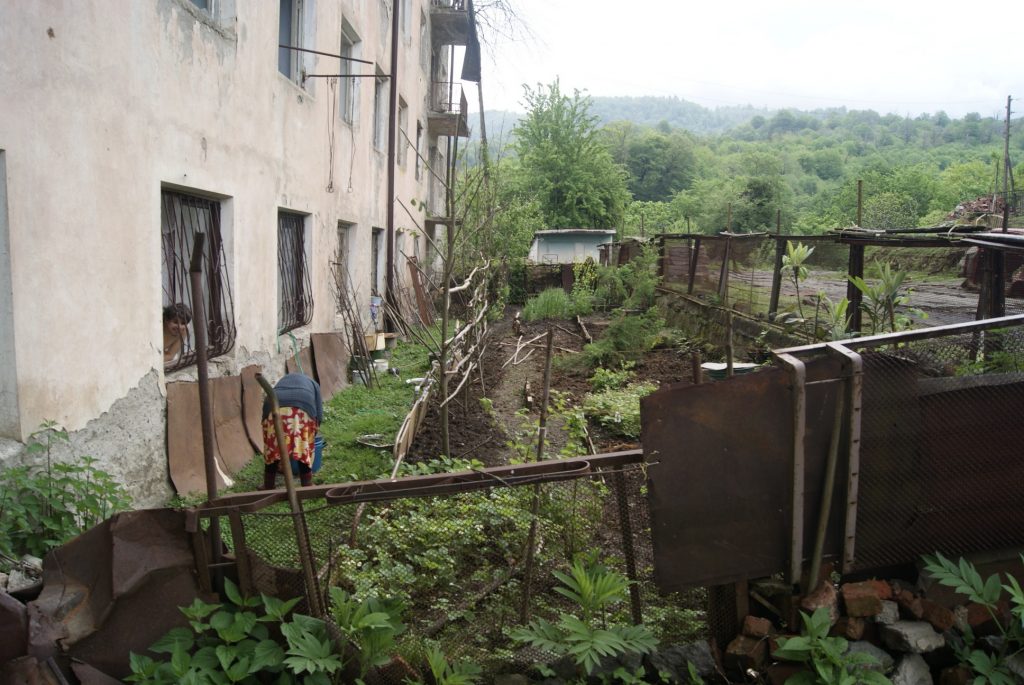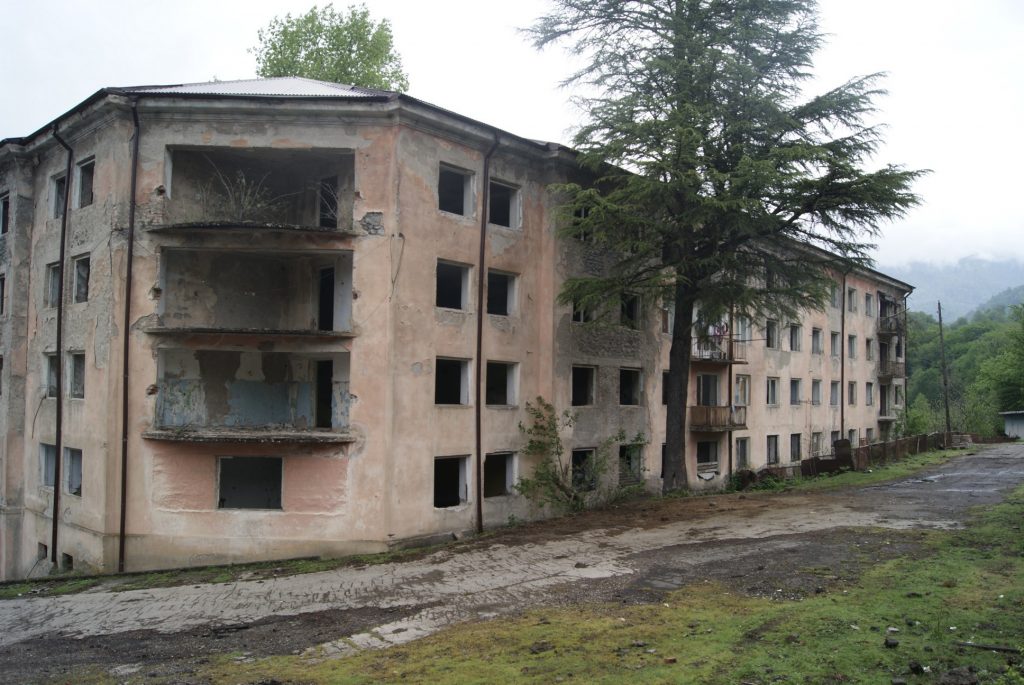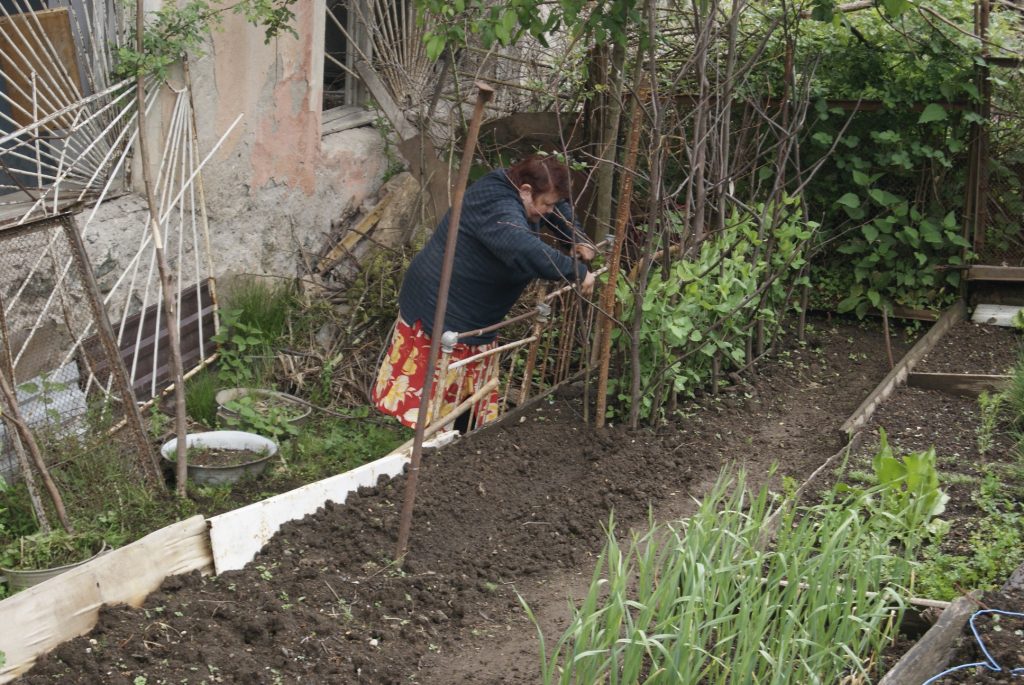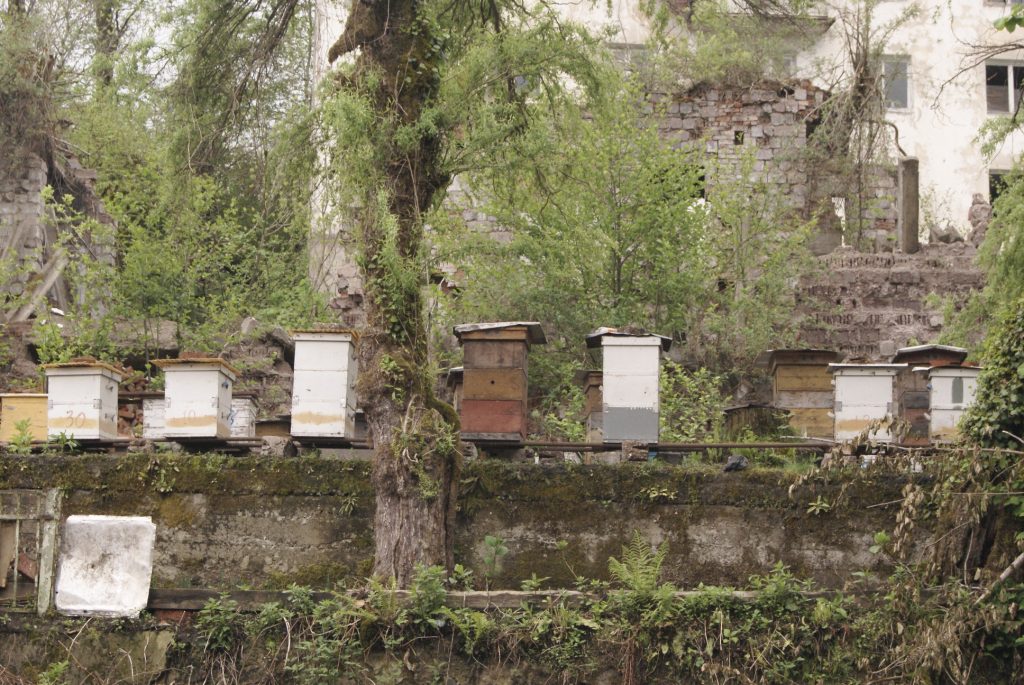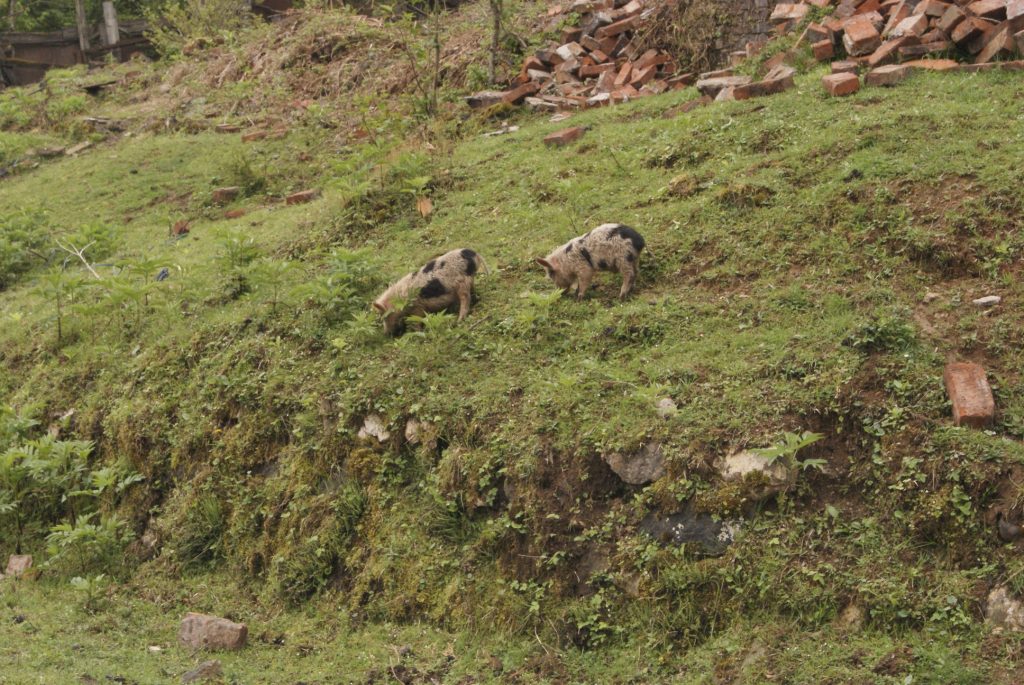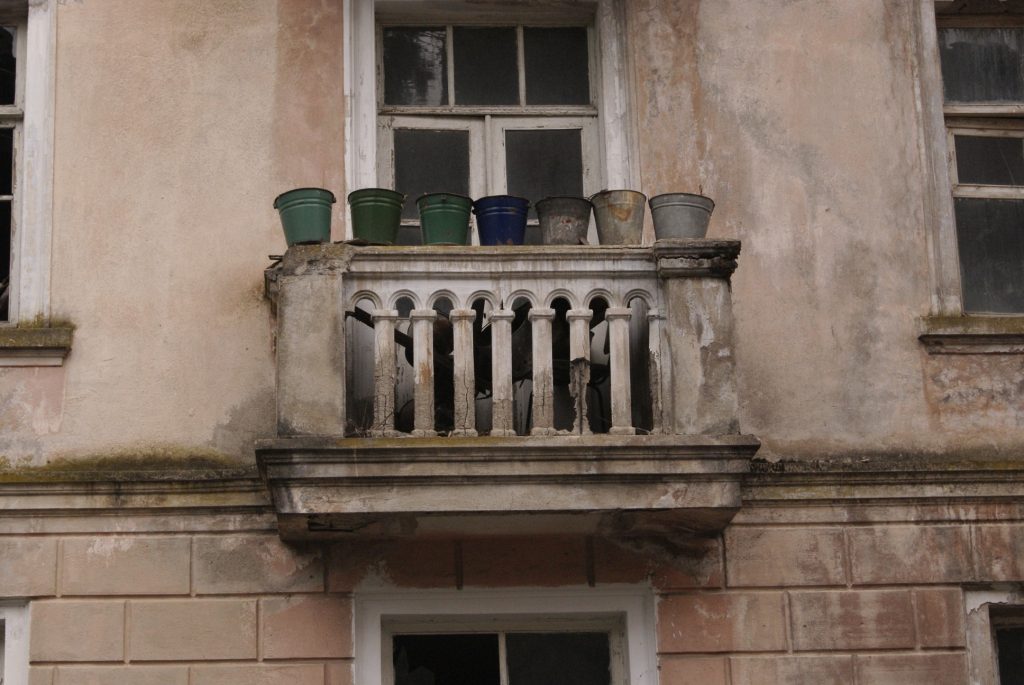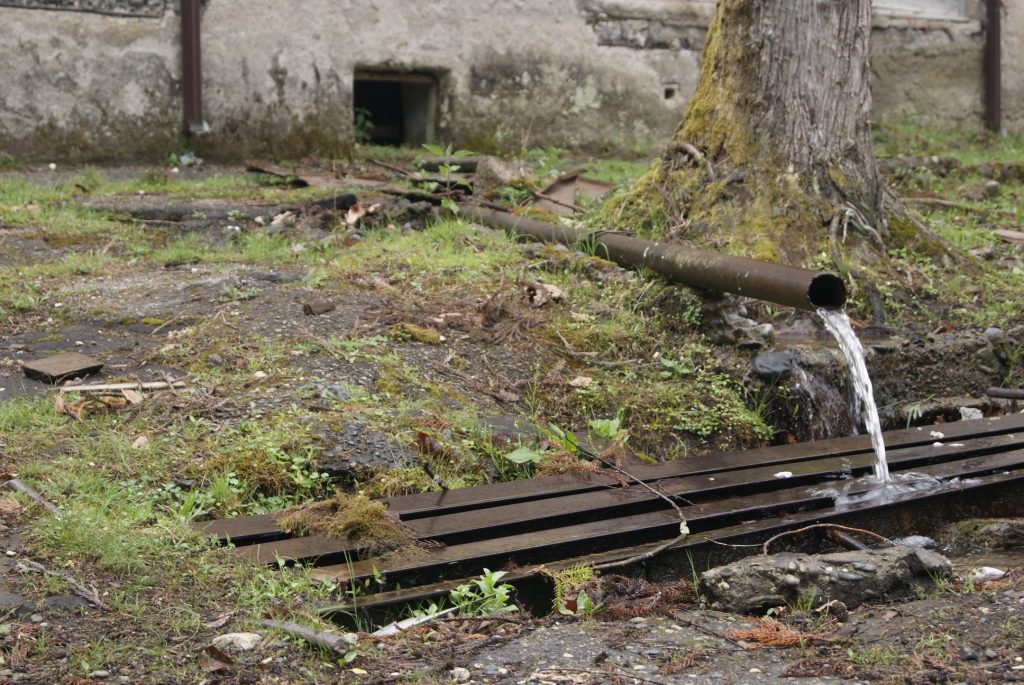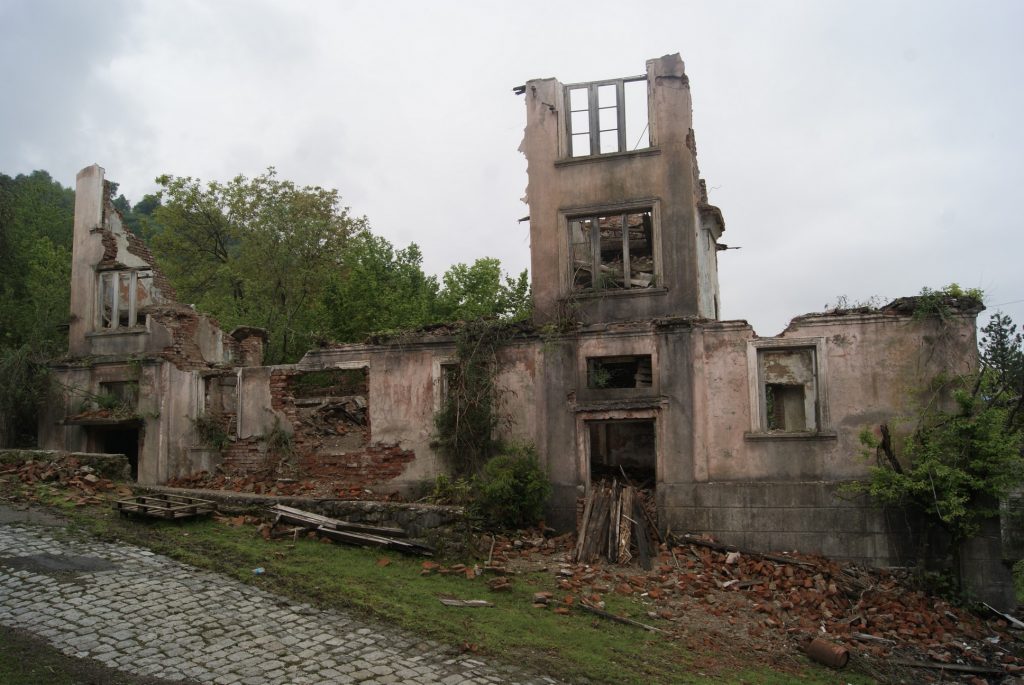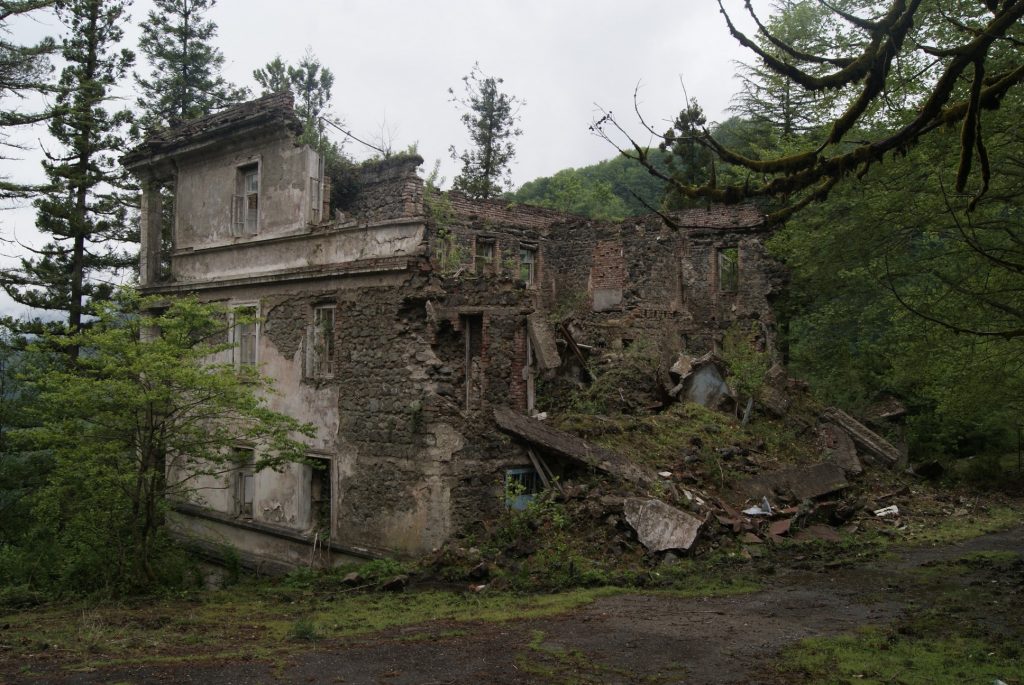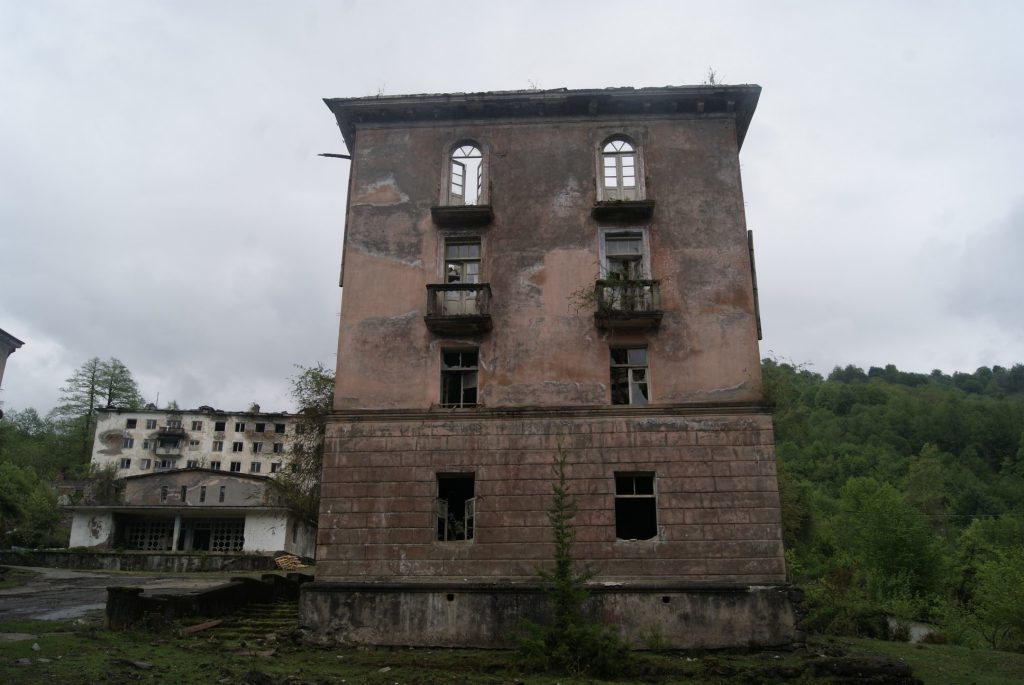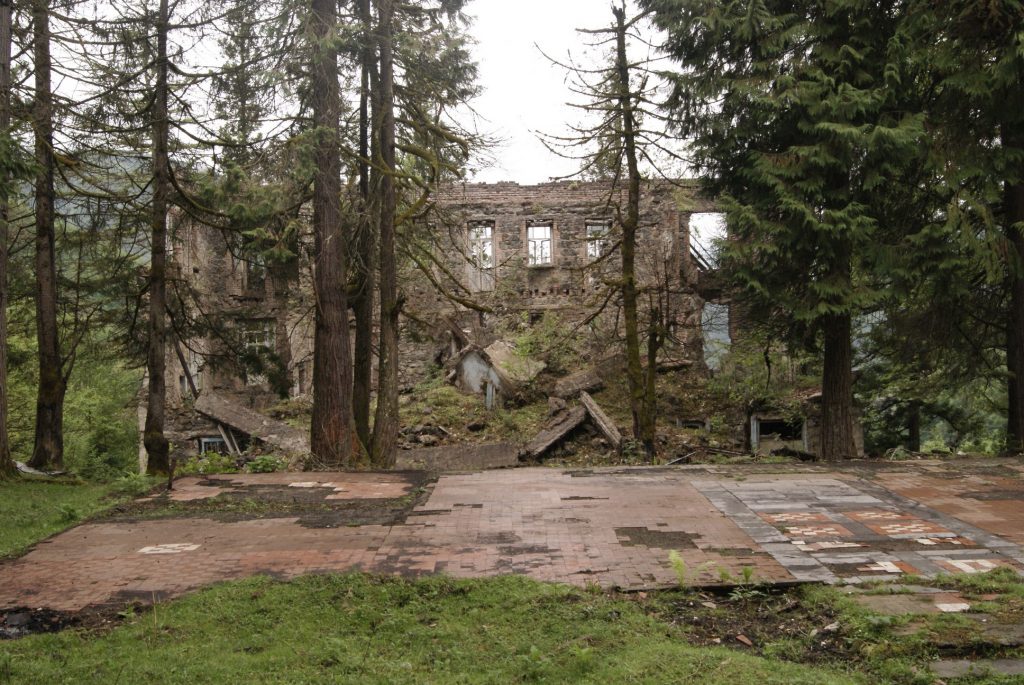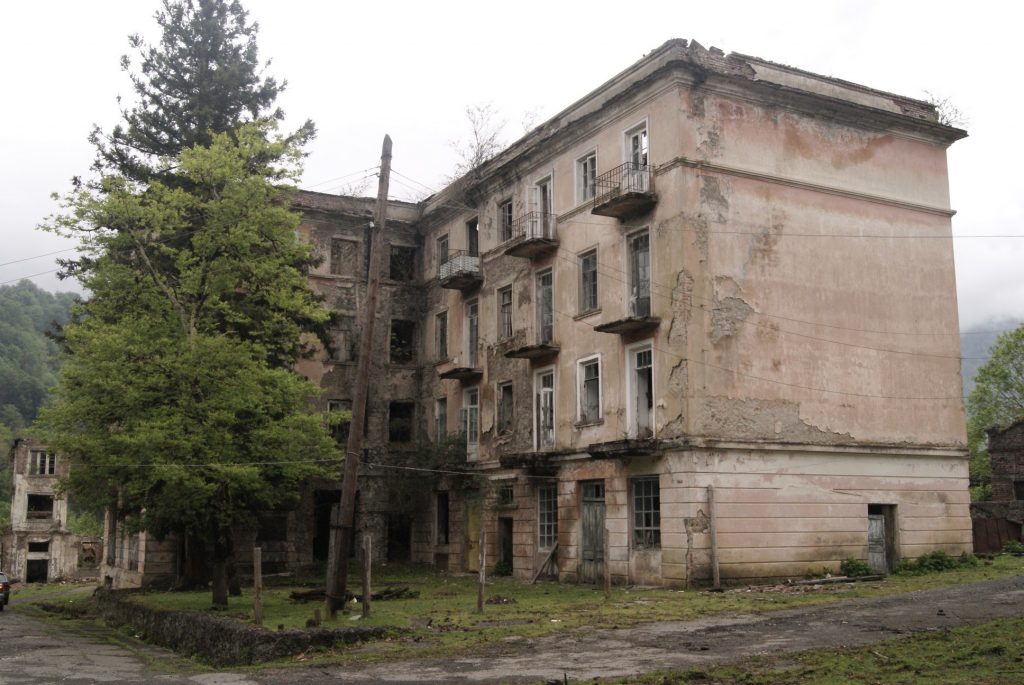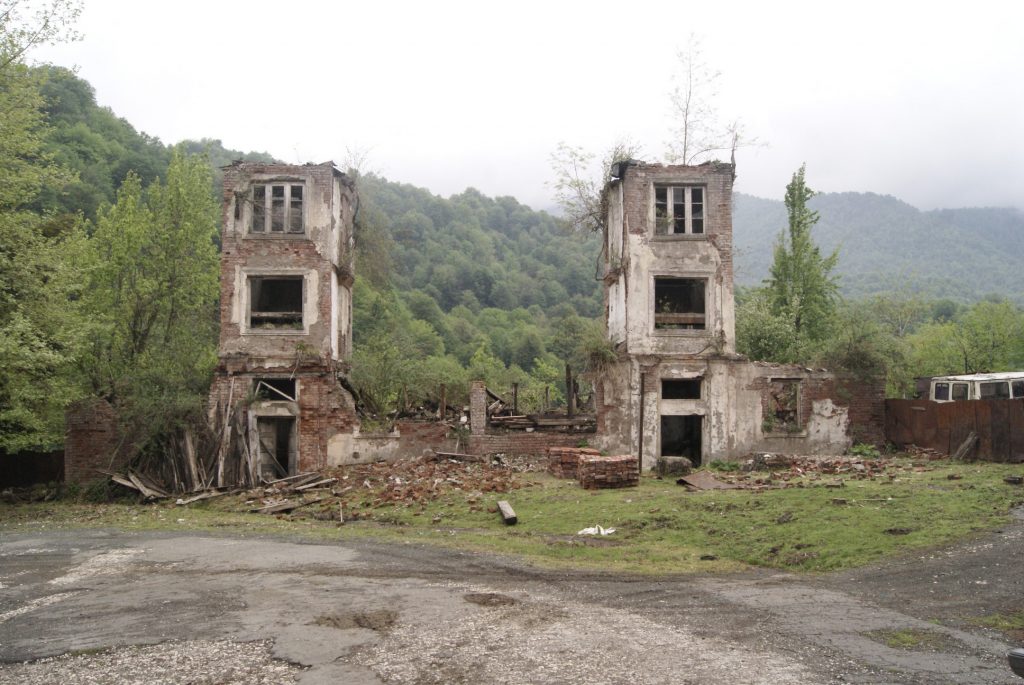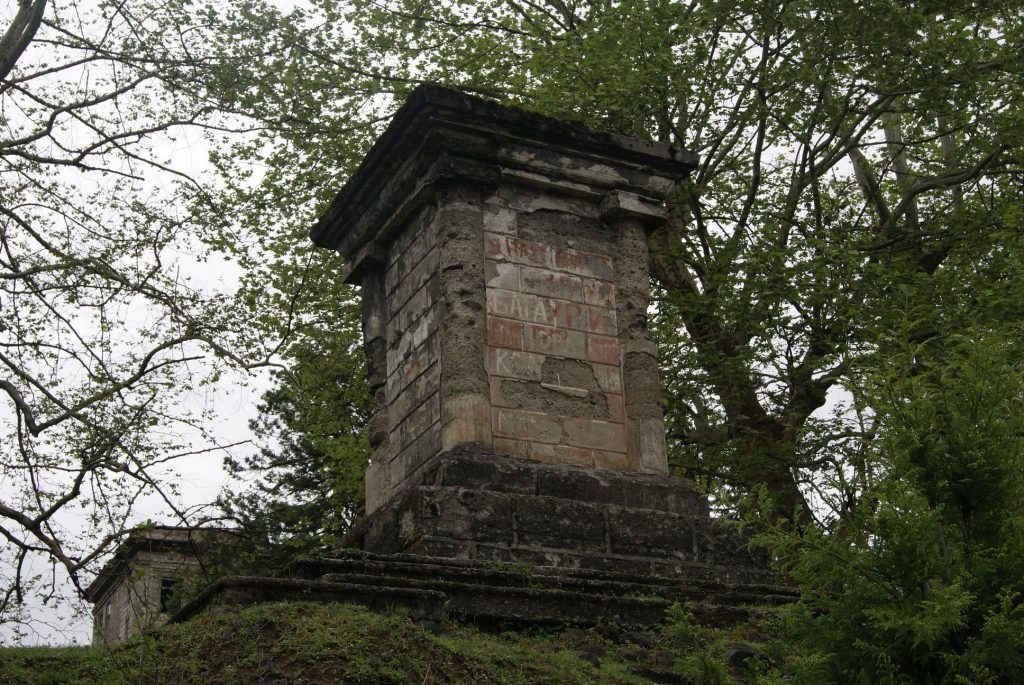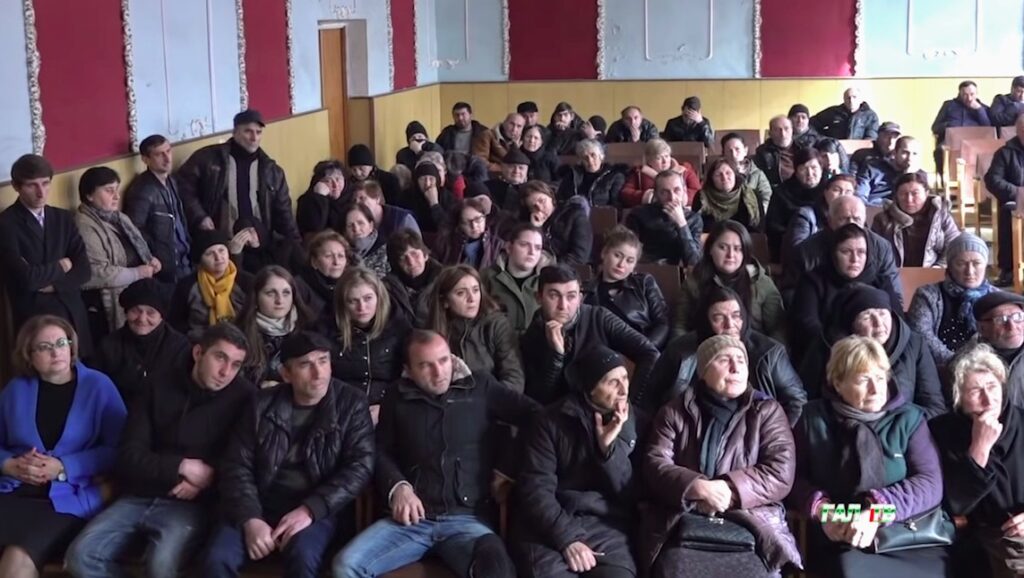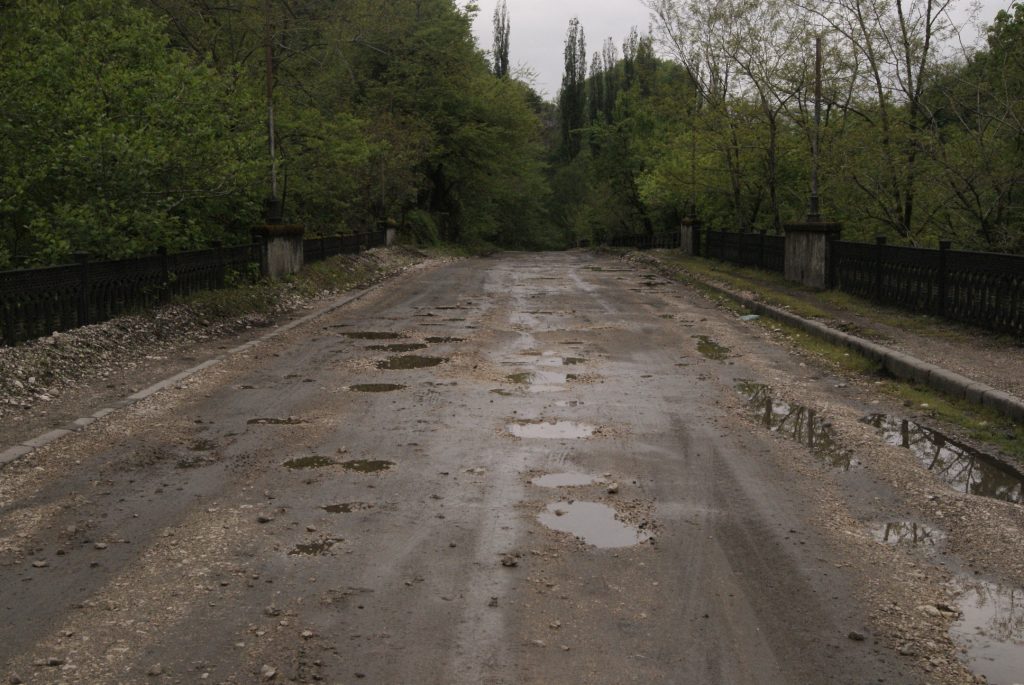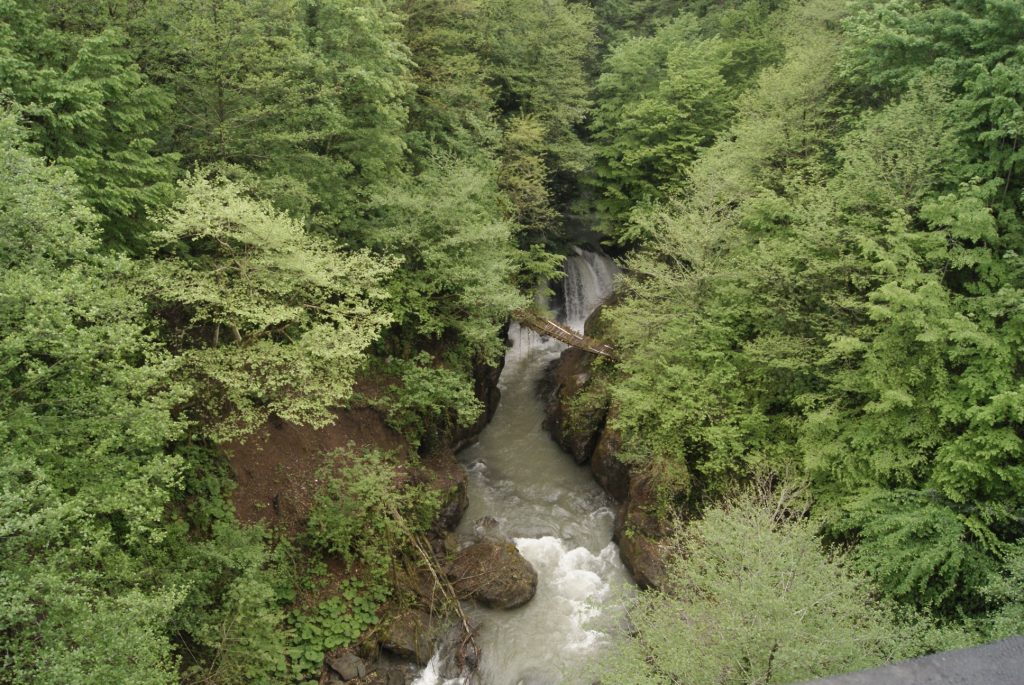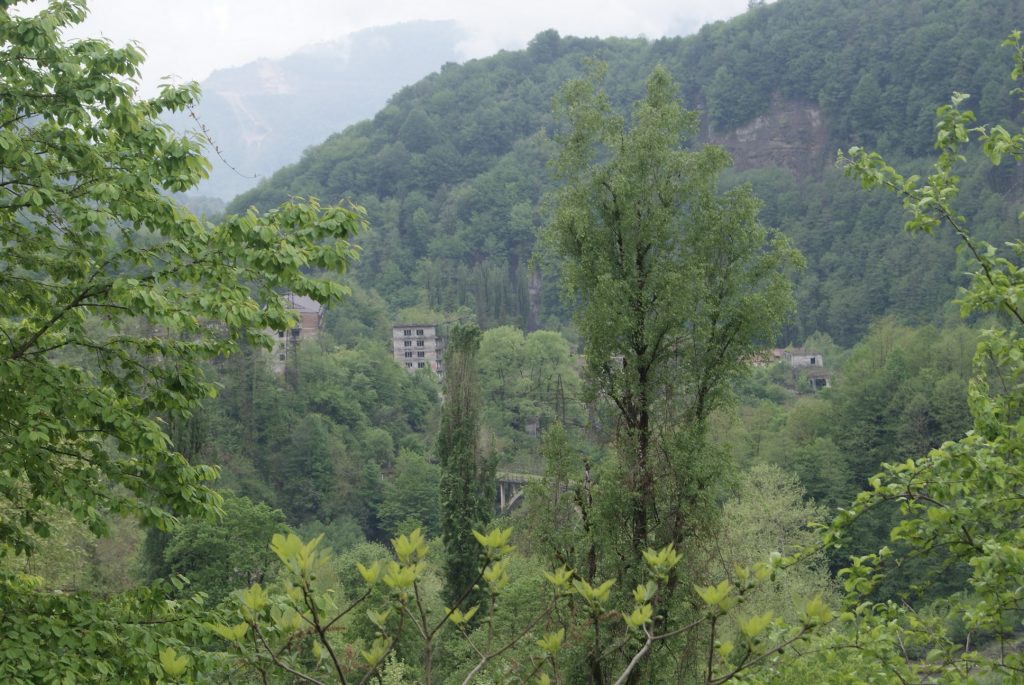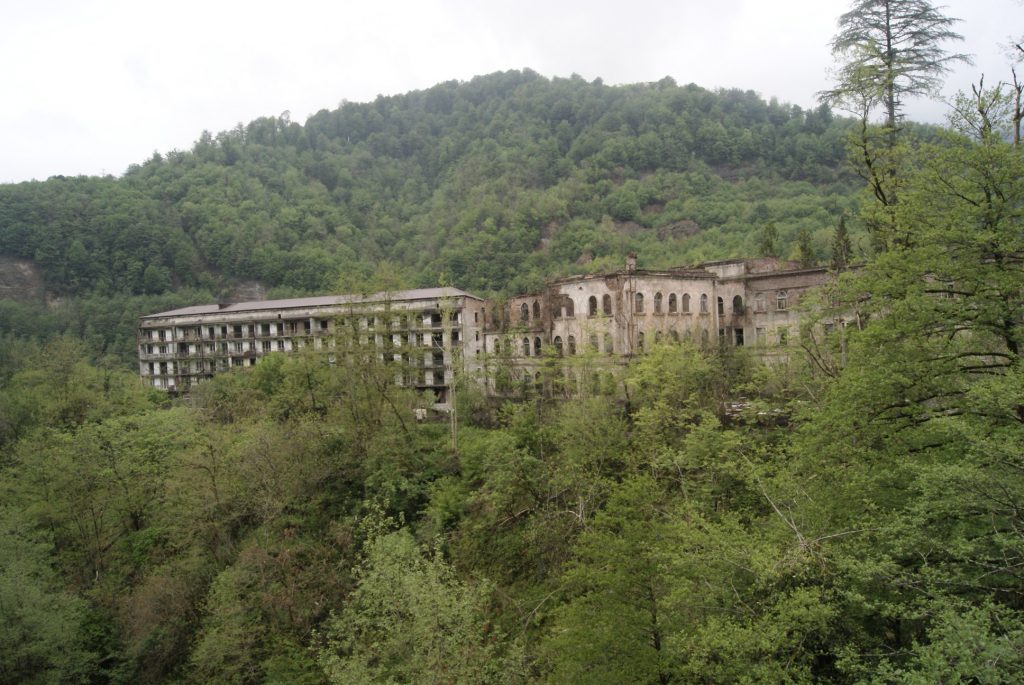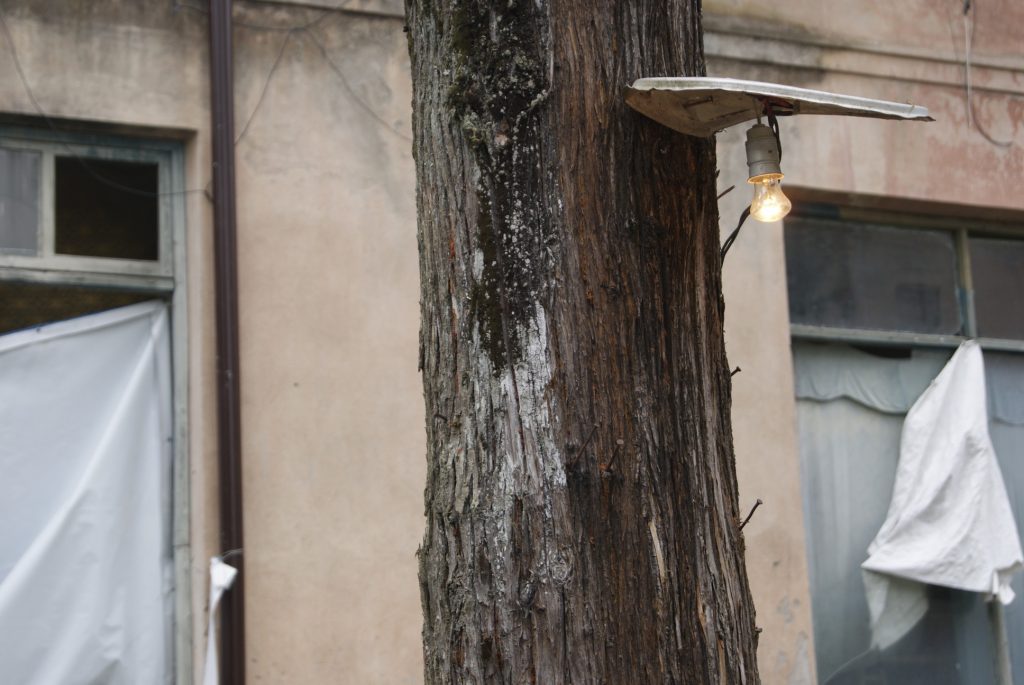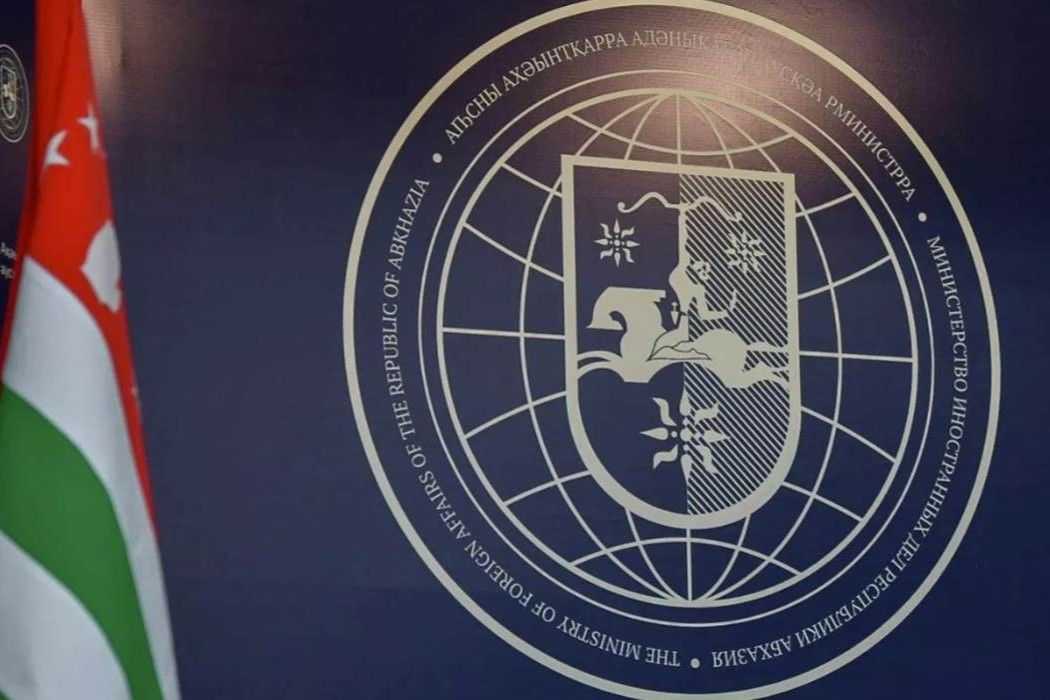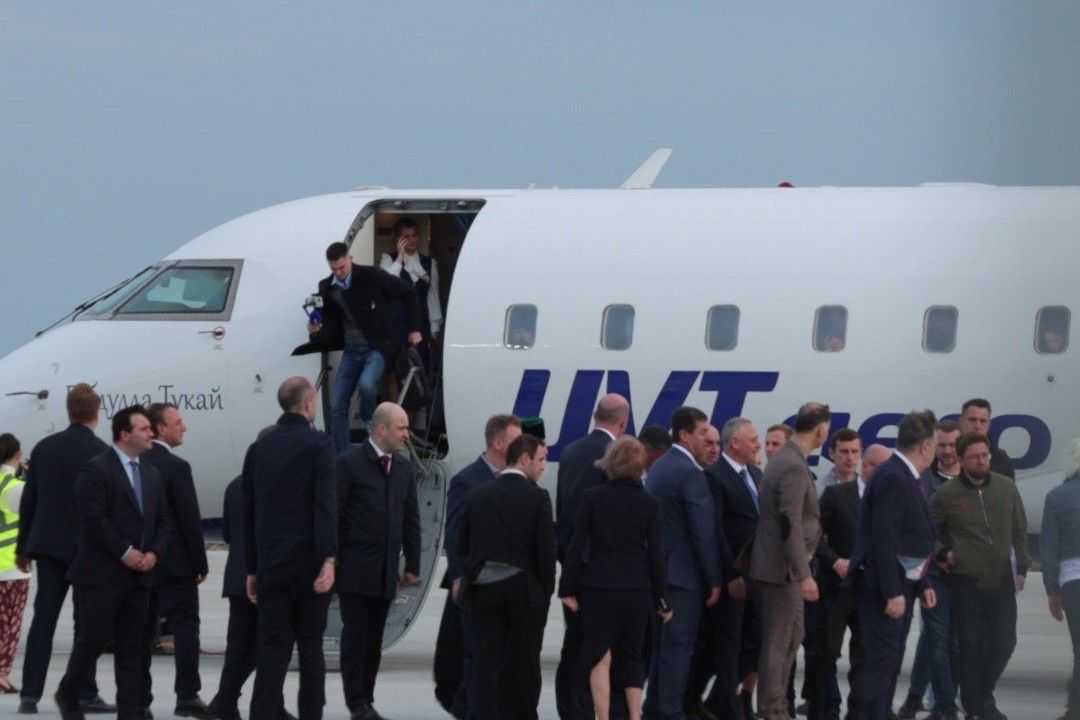

 The post-war recovery has been slow to come to eastern Abkhazia, particularly Tkuarchal District. More than 20 years have passed since the end of the Georgian–Abkhaz war, but so far, development in this part of the republic has remained all talk, and little substance.
The post-war recovery has been slow to come to eastern Abkhazia, particularly Tkuarchal District. More than 20 years have passed since the end of the Georgian–Abkhaz war, but so far, development in this part of the republic has remained all talk, and little substance.
The abandoned villages of upper Tkuarchal District paint a striking picture. Villages such as Dzhantukha, Akarmara, Pyataya Shakhta, Polyana, and Kharchilava are located in Abkhazia’s coal basin. During the Soviet period, different ethnic groups lived and worked together in the area — Russians, Greeks, Abkhaz, Georgians, and Armenians. Most of them abandoned their homes during the war. Today, mostly Russians and Abkhaz live there.
These settlements are known in Abkhazia as ‘ghost towns’, because from a pre-war population of 15,000, today they are home to only around 200 people.
In 2003, the entire population of Tkuarchal District was around 15,000; by 2011, the number had risen to just 16,000. In comparison, before the war, in 1989, approximately 43,000 people lived on the present territory of the district.
‘All of this is the consequence of the war’
Large concrete Soviet buildings, khrushchyovkas (five-storied apartment blocks built in the early 1960s), stand in decay. They are considered densely populated if even one or two families inhabit them. People try to save their homes from the decay however they can. The only positive legacy from the Soviet past is that people leave their homes unlocked whenever they leave the house. There is nothing to steal and no-one who would try to.
All the flats are state-owned, and when elections are held, they host polling stations which are visited by the area’s tiny electorate. At the entrance to the village of Dzhantukha, I meet a local resident. He’s an elderly man and he starts a conversation.
‘All of this is the consequence of the war.’
‘Can I talk with you?’
‘Why talk? Everything is clear anyway…’
Before the war, life in the village was vibrant, with community centres, schools, and kindergartens. Even now, cobbled streets and magnificent buildings can be found between the ruins. People who once lived here and played a role in the Soviet centrally planned economy have now left.
Dzhantukha is the most populous of the ‘ghost towns’ — it has about fifty inhabitants. There are around 38 living in Akarmara, with similar numbers in the other villages. The khrushchyovkas with a family or two living inside are marked out by laundry drying on their balconies.
Two young girls, aged seven, peek out from a window in one ruined house. They immediately hide upon noticing the camera in my hands.
‘Our mum forbade us to be photographed’, one of them says.
‘Why?’
‘She forbade it and that’s all’.
The girl whispers something to her friend and they abruptly run out of the ruined building and disappear.
Most people in the area work for a small Turkish coal mining firm — Tkuarchalugol. Every family also does its own subsidiary farming — they breed cattle, keep bees, and grow vegetables. Otherwise it’s hard to make ends meet.
Schools, shops, and buses
Demand for goods in the local shop is small, so in order to buy food or household items, people first need to call the shopkeeper, who lives nearby, and ask if they’re at home. In winter, the district administration supplies free candles and bread to the villages.
Once a week, local residents visit Tkuarchal’s market. Twice a week a bus runs from the upper part of the district to Tkuarchal and back. A bus also takes the children to school.
‘When there are holidays, we go to visit each other’
About ten years ago, an elderly woman named Galina, or as her few neighbours call her, Aunt Galya, moved to Dzhantukha from Akarmara. Despite her eldest daughter living in France, Galina does not intend to move to live with her.
‘I have five grandchildren and one great-granddaughter there’, she says.
‘Don’t you want to move?’
‘Well, me? Where? Yes, there is a good level [of life] there, there is work, money, cheap products, but my heart draws me to Abkhazia.’
‘Do you have children there?’
‘The eldest daughter is there and the youngest and middle ones live in Tkuarchal.’
‘Do they help?’
‘The eldest one told me, “mum, I will send you [money]”, but I refused. I said, “when you have children, you’ll feed them”. Let them spend their money on their children.’
‘And how do you survive yourself?’
‘I receive a pension [an Abkhazian pension is ₽500 ($9) per month]. They added ₽1,000 ($18), but they haven’t given it yet. If you don’t have a vegetable garden and a house, you won’t survive’, Aunt Galya admits.
No note of resentment at her living conditions can be detected in the woman’s voice. She takes the situation as a fact, and simply lives her life. She works in her garden and house, raises her grandchildren, and hopes for the best.
‘I didn’t use to farm before the war. Back in the day, the prices were low and there were jobs. And when the war was over, we had no jobs and the shelves were empty. So I had to start working in the garden. I have onions, garlic, carrots, strawberries, peas, and potatoes. There are also some animals, we keep chickens and a pig with my neighbour. I bake bread myself, it is more convenient.’
Aunt Galya says that she, her few neighbours, and other residents of the village try to meet more often and to celebrate holidays together.
‘A 90-year-old woman lives in this building, as well as a young family, and me. When there are holidays, we go to visit each other. But we can’t always; everyone is busy with their own affairs.’
A neighbour walks out onto the balcony.
‘Natasha’, Aunt Galya calls, ‘they said that you can plant zucchini. I already prepared the ground. I don’t know what will happen, but we will plant zucchini’.
‘People get used to everything’
A young woman named Natasha, or Natalya, has lived together with her husband and five children in this house for some time. Natasha was eleven years old when the war began. Every day she remembers what the villages were like before the war. Despite the family having relatives living in central Russia, Ossetia, and Georgia, they have not had the opportunity to leave.
‘We recently bought land in Sukhum, we want to build a house there, but this won’t happen soon’, Natalya says.
She receives a child allowance — ₽500 ($9) for each child. Her husband works in the local coal pit. The young family has its own farm. Near the house, where Natalya’s kindergarten used to be, they keep pigs, cocks, cows, and hens.
She says that when people started leaving the village after the war it was very scary at first, but the fear passed over time.
‘We are not afraid of the darkness in the street or the lack of people. I stay calm when faced with all of this. People get used to everything. Many people think that these places were destroyed during the war. In fact, it’s all due to looting. There was no work after the war and everyone lived as they could. Every day I remember what the city was like, and the war…’
A young boy runs by; he runs through the window of a ruined building and hides. A ball flies out of the window and another boy runs up. He kicks the ball and it rolls down the hill. Children run after it, shouting. As they run they pick up stones and throw them at destroyed buildings. These boys will remember their childhood for what it was — light, carefree, and surrounded by ruins. For them it will be fully normal, because they don’t know anything else.
All place names and terminology used in this article are the words of the author alone, and may not necessarily reflect the views of OC Media’s editorial board.
